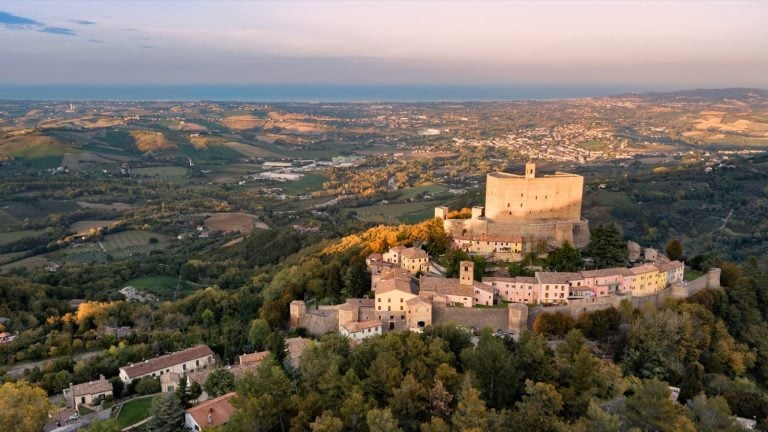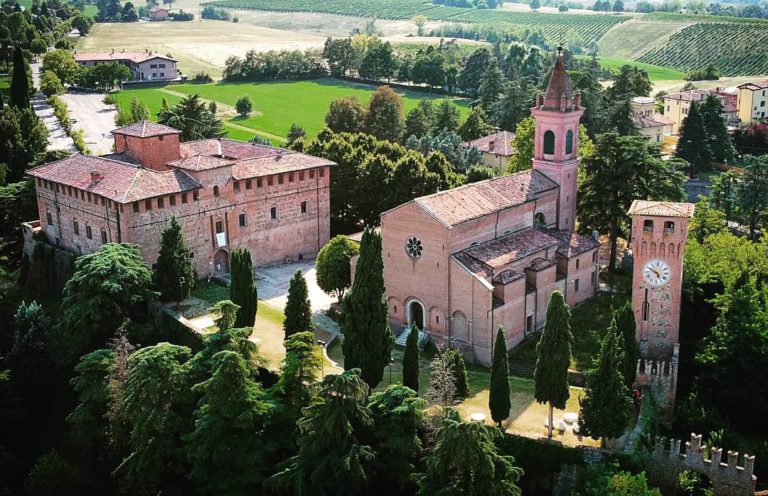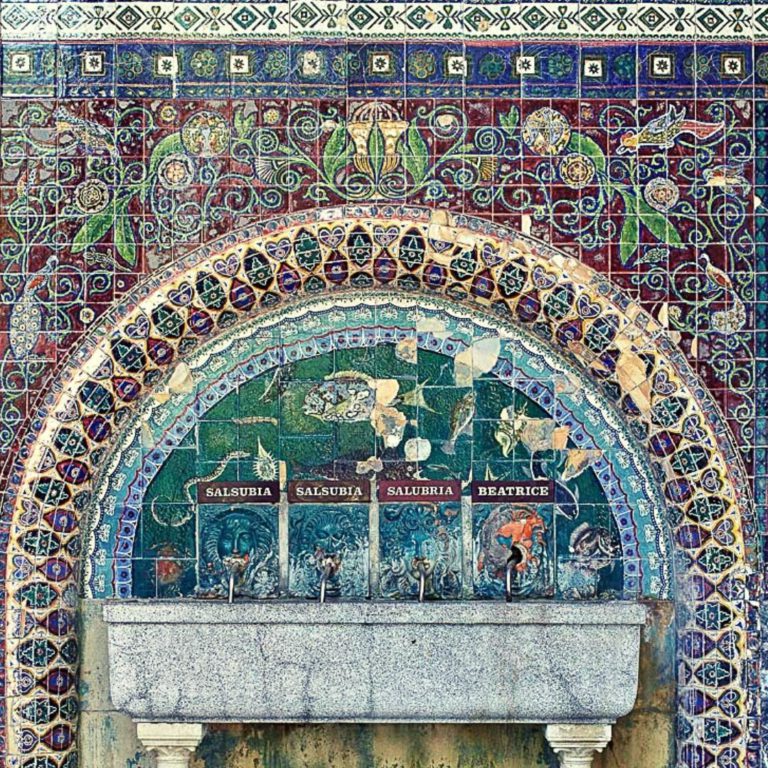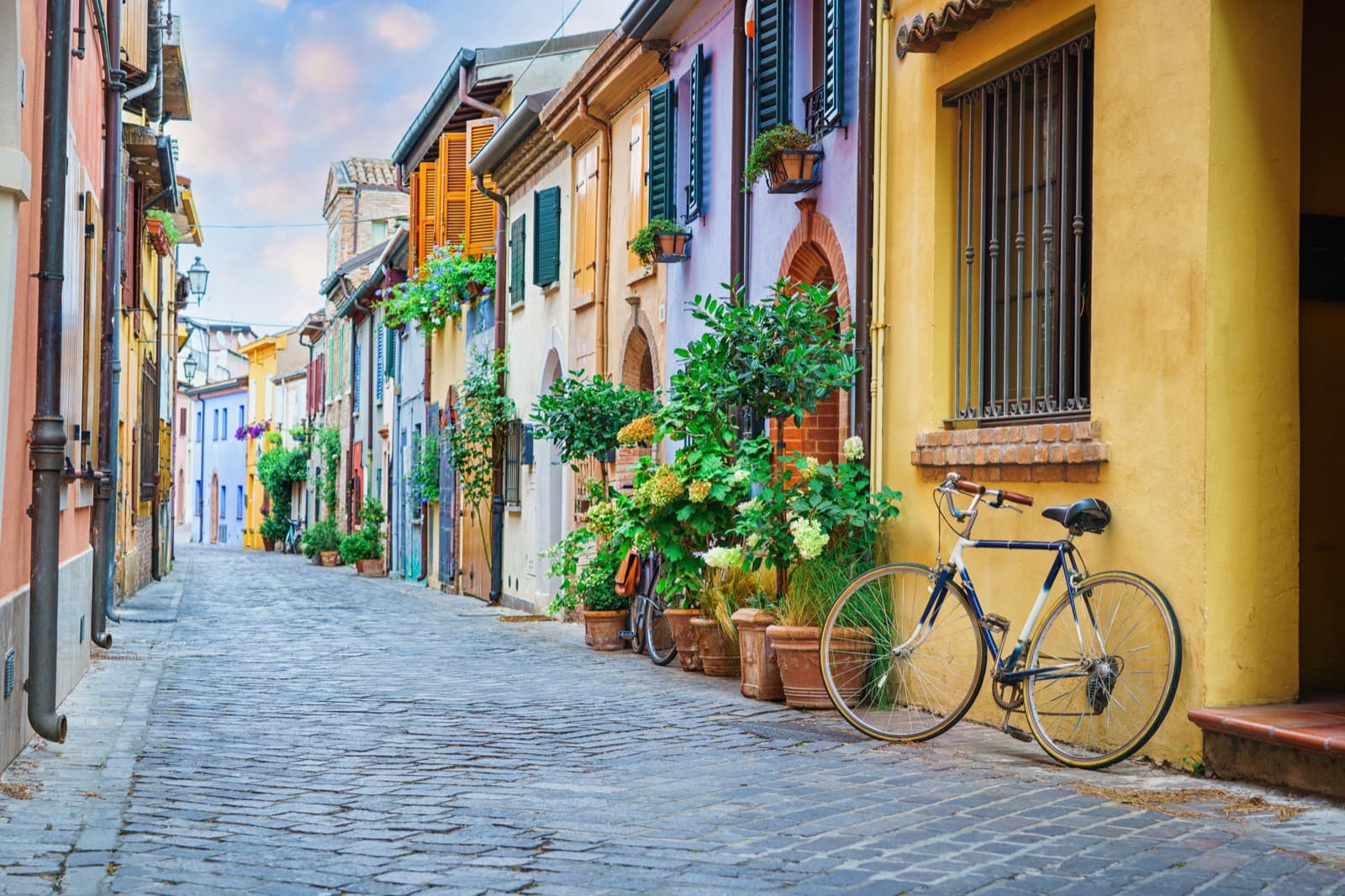What about a Castle + Spa combo for your next weekends in the Emilia-Romagna region?
Emilia-Romagna’s castles bear witness to the noble families that lived, held sway, and expanded their lordship in this region over the years.
Here is a list of 9 castles in Emilia with thermal spas within 30 km. If you feel like a lady or a knight of a bygone era, here are some ideas for a cultural break combined with some well-deserved relaxation.
CASTLES AND THERMAL SPAS NEARBY PARMA
SAN VITALE FORTRESS IN FONTANELLATO
The first defence tower of the Castle was built by order of the Pallavicino family in 1124 and it also included a drawbridge.
Today the Castle, which passed through the hands of the Visconti family and then the Sanvitale family in 1386, is the centre of the town and is surrounded by a moat full of water – as it once was – even though the bridge is now made of stone. It was an important noble residence until 1948, when count Giovanni Sanvitale sold it to the Municipality.
We recommend visiting the living quarters of the Sanvitale family (still intact), the only Camera Obscura still working in Italy, and the fresco of Diana and Actaeon painted by Parmigianino in 1524. This masterpiece of the Italian Mannerism can be enjoyed also beyond the regular opening hours of the castle, by booking a private visit.
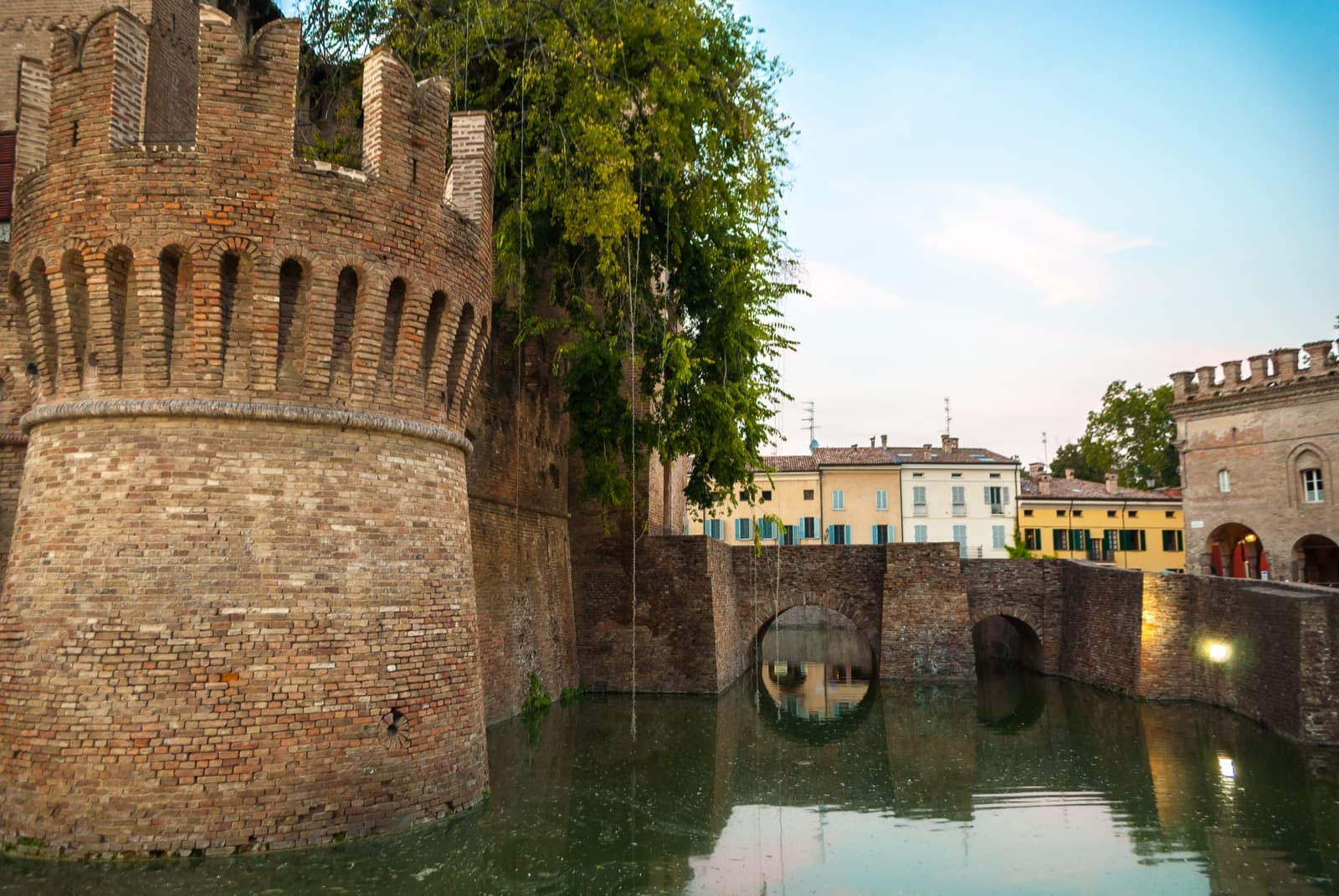
Sanvitale Fortress, Fontanellato | Ph. nadietta90
CASTLE OF NOCETO
Better known as “La Rocca” (“The Fortress”), after being destroyed several times it was rebuilt during the 14th century by counts Sanvitale and then in the middle of the 15th century by Pier Maria Rossi, who gave it its current form.
For centuries, the rulers of Noceto – the Sanvitale family – used it as the administrative centre of the town. This is why it includes a courthouse, a dungeon, the podestà’s residence and the militia’s.
The walls with four circular towers are still visible today and the quadrilateral fortified keep offers a breathtaking view of the town. You can also visit a beautiful garden in a typical late Gothic style.
More than 10 years ago the fortress became also known as the “Castle of Music”, as it houses the B. Slawitz Museum of Old Records, the collection of the Liuteria Parmense, and the International School of Violin-making of master Renato Scrollavezza.
If you choose to visit Parma’s castles, be sure not to miss four thermal spas within short distance:
- Salsomaggiore Terme: a wide array of options including the Art-Nouveau-style Terme Berzieri and Terme Baistrocchi, that combine the beneficial properties of thermal waters with Western and Eastern style massages.
- Monticelli Terme: to balance your body and (noble) soul, you just need to visit Terme di Monticelli
- Tabiano: you can spend your day off at Terme di Tabiano, also known as the “Terme del respiro” (Thermal spas of the Breath).
- Medesano: to get away from the bustle of noble courts, take some time to enjoy nature in all its glory, among the meadows, forests and orchards that surround Terme di Sant’Andrea.
CASTLES AND THERMAL SPAS NEARBY REGGIO EMILIA
CASTLE OF BIANELLO
This is the only Castle still standing today of the 4 defensive towers which gave the name to the municipality it is located in (Quattro Castella), which once rose on just as many hills.
When in 1044 Beatrice of Lorraine bought six courts including Bibbianello, there was already a castrum. This castle is strongly linked to Matilda of Tuscany, so much so that it is said to have been her favourite one.
Inside, you can visit several rooms on the main floor, which is accessed via a majestic neo-baroque staircase and still preserves frescoes of the seventeenth and eighteenth centuries; the small chapel dedicated to St. John the Baptist, which was constructed in the tower; and the dungeon where you may see graffiti carved into the walls by those who have been held prisoner there over the centuries. Fun fact: the pomegranate flower held by the
Countess in a painting is actually the symbol of her reign and wisdom.
If you decide to visit the castle in spring, make sure you don’t miss the Corteo Storico Matildico, a historical parade of people in colourful costumes re-enacting the proclamation of the Countess as Vice-Queen of Italy and Imperial Vicar.
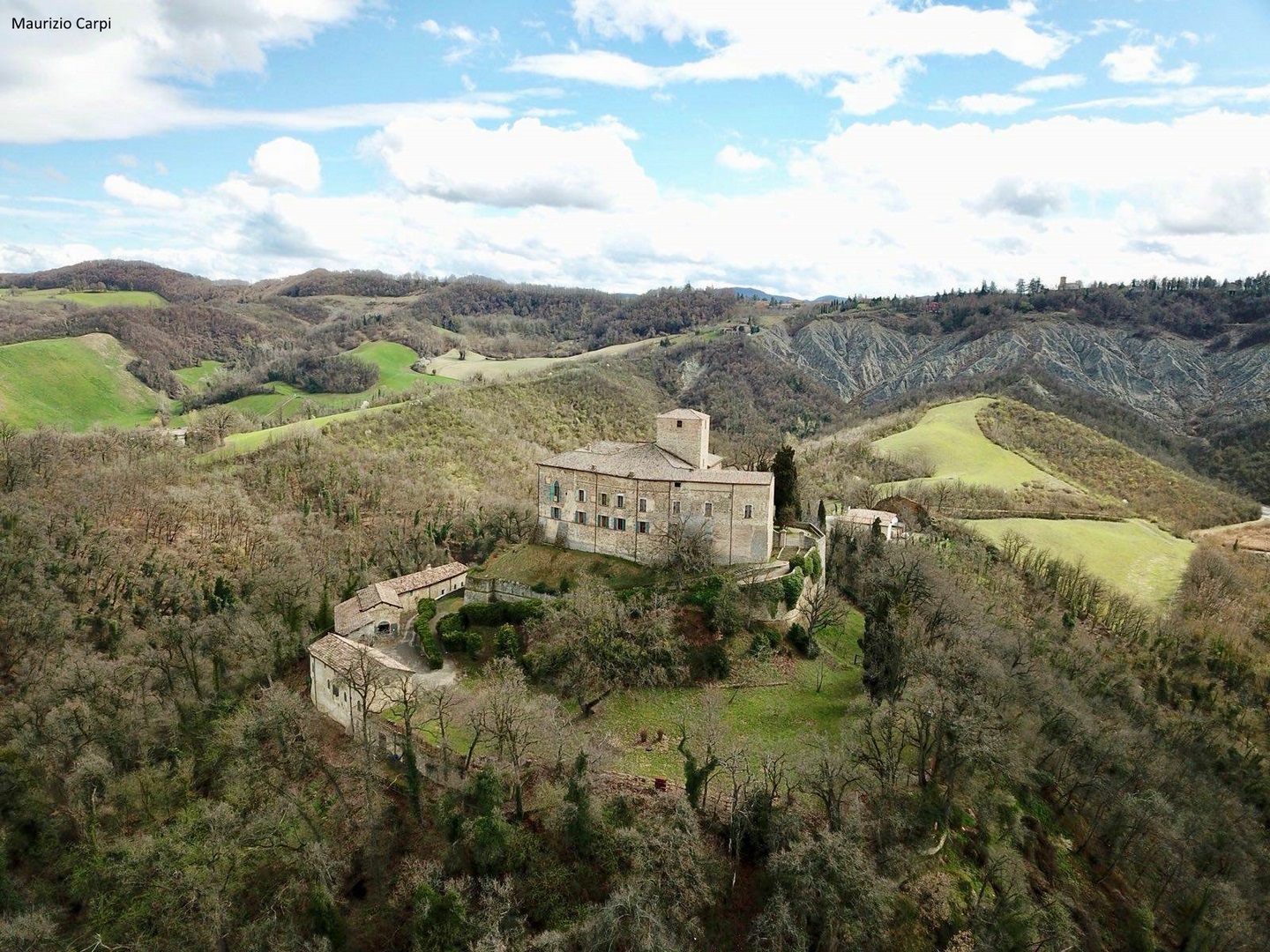
Bianello Castle | Ph. CastelliDucato
CASTLE OF ROSSENA
Unlike many other castles that were then transformed into stately homes, this Castle was built around 950 and still preserves its original military structure, designed to defend the castle of Canossa.
This castle, built atop a reddish volcanic hill (from which it takes its name), belonged to the Canossa family until the 11th century, when it passed to the Da Correggio family first and later to Marie Louise, Duchess of Parma.
Arriving on foot, you will be greeted by its majestic walls. Inside, after passing through the heavy castle door, among machicolations and portcullises, you can visit all the three floors with frescoes dating back to the second half of 1700. Be sure to visit the large “Piazza d’Armi”, from which you can enjoy a stunning view of most of the properties of Matilda’s kingdom.
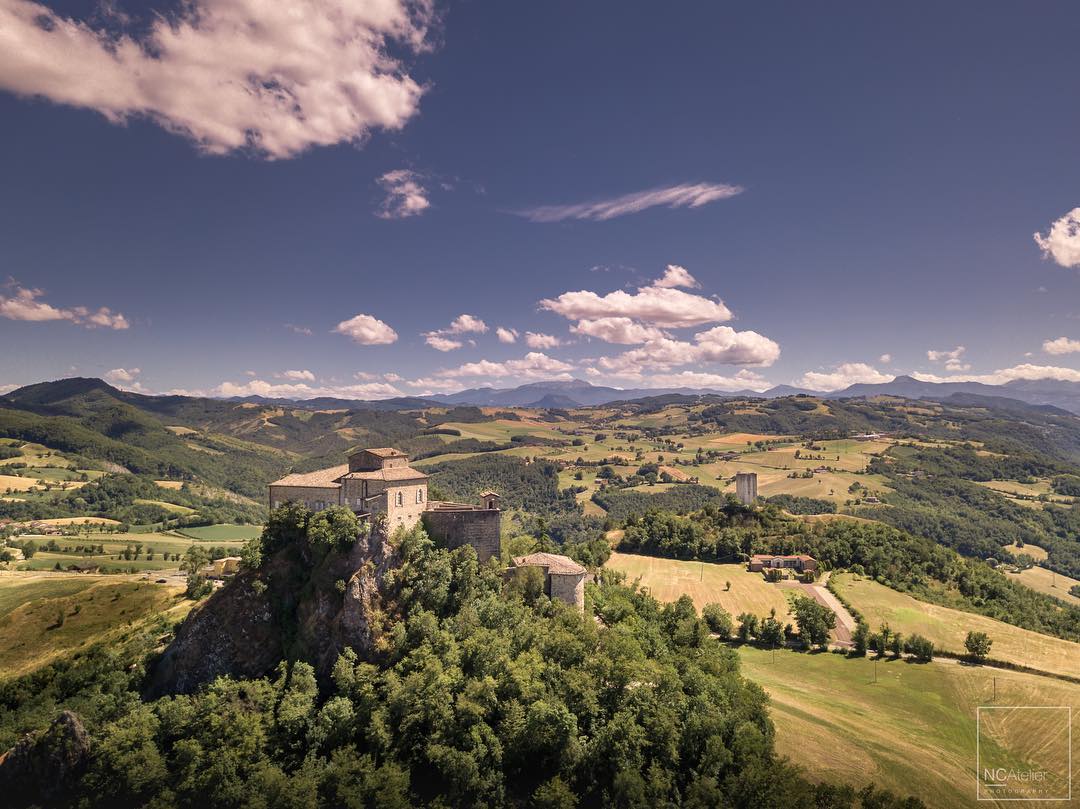
Rossena Castle | Ph. @nico_cocchi
CASTLE OF CANOSSA
Built in the middle of the 10th century by Adalberto Atto, it immediately became a defensive, noble and cultural centre also thanks to the presence of the church of Sant’Apollonio and the nearby Benedictine convent. Today, unfortunately, only the ruins remain, mostly dating back to the late Middle Ages and subsequent centuries.
This place is known for the meeting that took place in 1077 between Emperor Henry IV and Pope Gregory VII, in which Matilda of Tuscany played a fundamental role (hence the expression “going to Canossa”).
After Matilda’s reign, the castle passed through many hands, from the Da Correggio family to the Visconti and the Farnese families, then to the House of Este, who named poet Ludovico Ariosto castellan, and eventually to the Rondinelli Counts.
If you need a break after learning everything there is to know about Matilda’s reign, just cross the Enza river, which is the border between the provinces of Reggio Emilia and Parma, to reach the spa at Terme di Monticelli, a stone’s throw from the three castles of Reggio Emilia.
CASTLES AND THERMAL SPAS NEARBY MODENA
SPEZZANO CASTLE
The castle is located in Fiorano Modenese, on the first hillside. Of medieval origin, it was transformed by the Pio di Savoia family from 1529 into a noble palace; there are few elements that betray its Castrense origin, including the moat, elements of the drawbridge, and a corner tower.
Its main aspect is the elegant country residence, intended to pleasantly welcome guests, with a beautiful Renaissance arcaded courtyard.
Inside, two important sixteenth-century pictorial cycles, representing villages, towers, and castles of the fiefdom, reinforce the dimension of the noble residence.
Today the house houses the Fiorano Ceramics Museum on the first floor and underground, and the municipal vinegar factory in the pentagonal tower, once the site of prisons.
The castle-villa is surrounded by a nineteenth-century romantic park, equipped with an area equipped for picnics and a cycle-pedestrian path from the castle that leads to the Salse di Nirano Nature Reserve and the castles of Nirano and Montegibbio. A visit that offers an overview of the whole territory.
An audio guide App is also available.
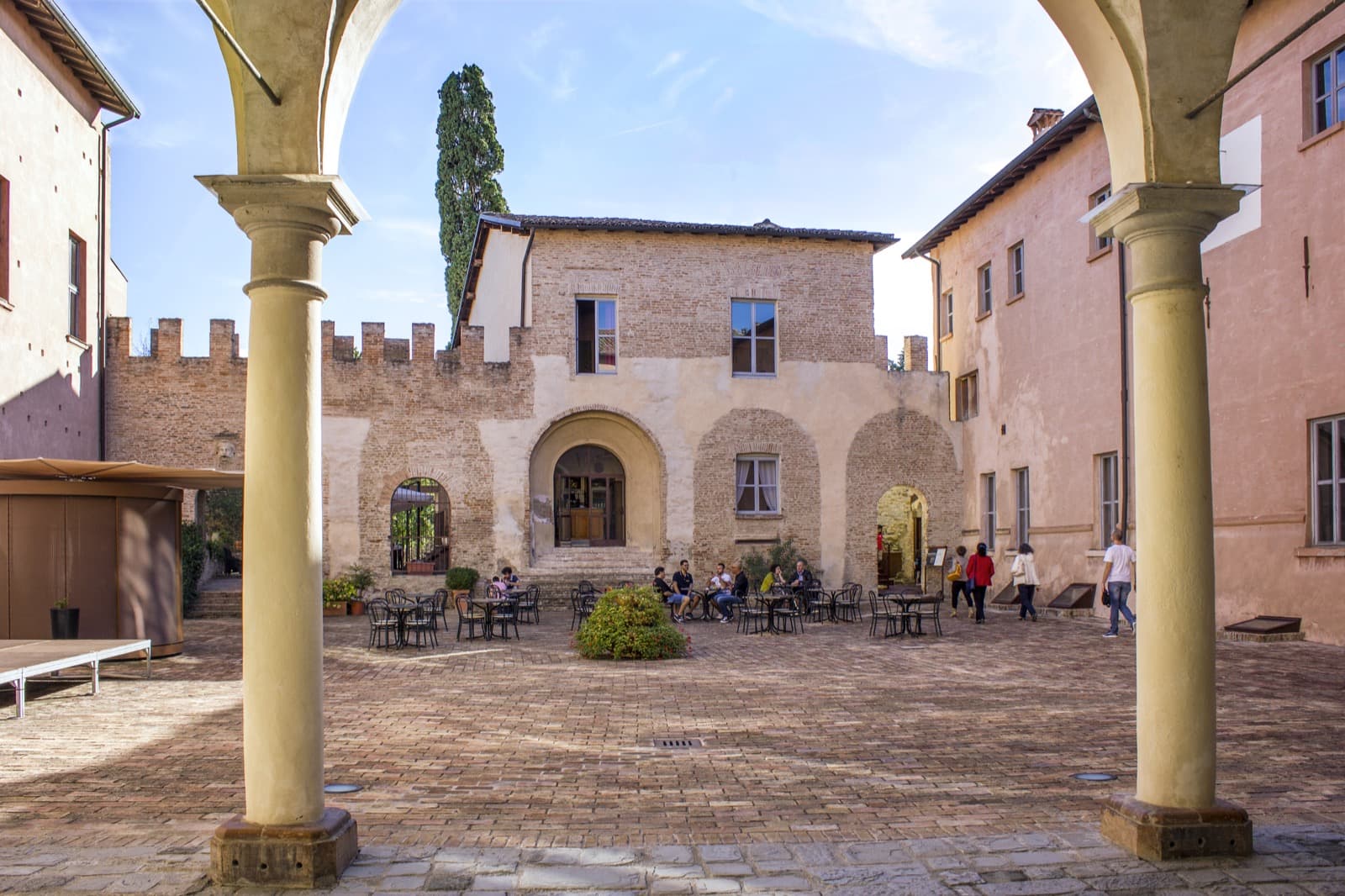
Spezzano Castle | Ph. ovikovi
CASTLE OF FORMIGINE
This Castle is a perfect example of transition from medieval fortification (fortress) to Renaissance palaces (Marquis Palace of Marquises Calcagnini).
Archaeological surveys have found evidence of a moat, which isolated this fascinating building, with its swallow-tailed merlons and brackets, from the medieval hamlet.
The clock tower (which is over 30 metres in height) is also the keep of the Castle. Between the fortress and the Marquis Palace we can see the guardhouse, which was in charge of the drawbridges.
The Castle Museum is also worth a visit, to step back in time and hear the sounds and voices of a medieval village. If you want to enjoy a panoramic view of the surroundings, you need to reach the top of the South-East Tower.
Many noble families have lived here over the centuries, including the Adelardi, Visconti, Este, Pio and Calcagnini families.
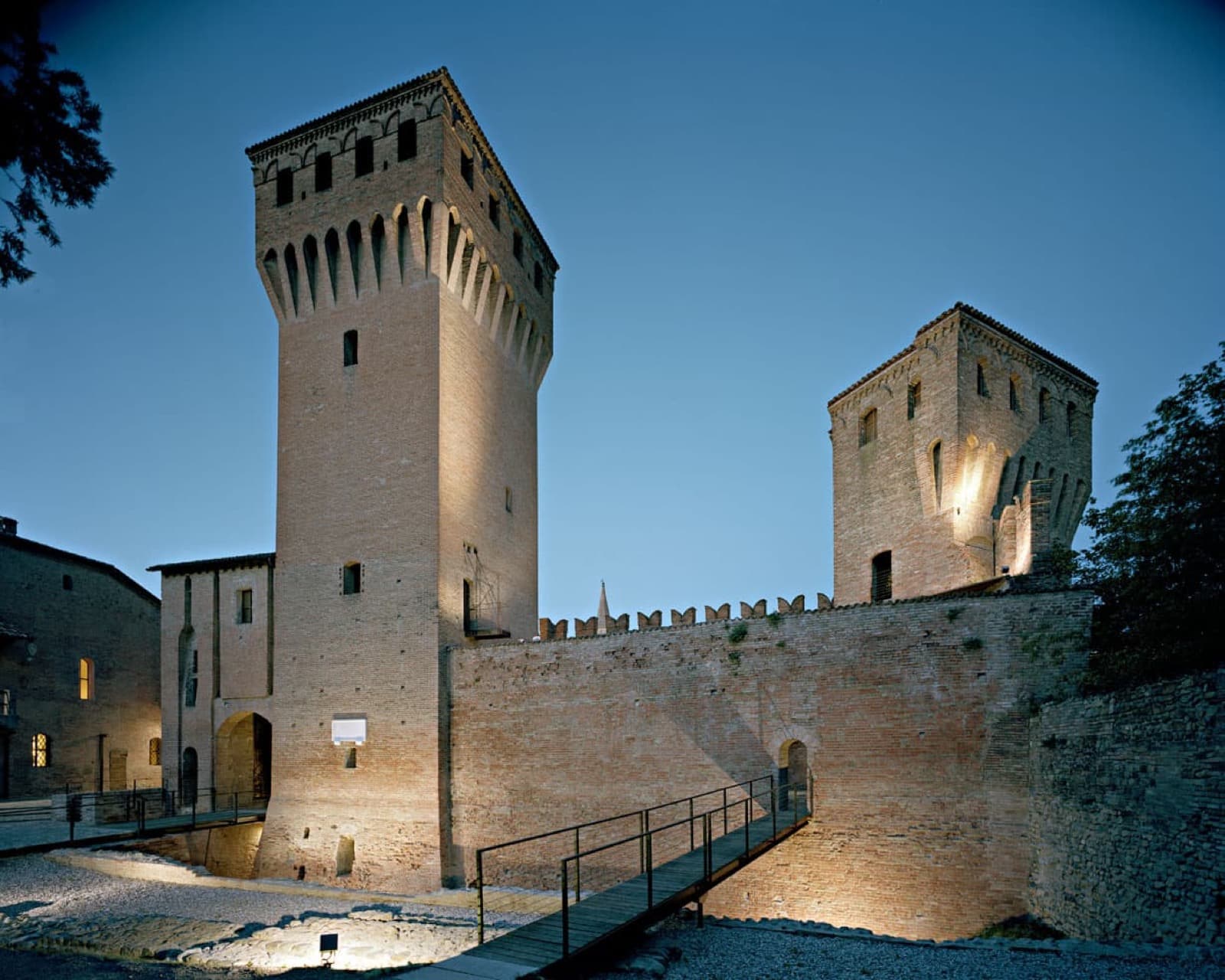
Castello di Formigine | Ph. Alberto Lagomaggiore
RANGONI FORTRESS IN SPILAMBERTO
The Fortress was built by the people of Modena to guard the border with Bologna and the Panaro river.
At the beginning the main entrance to the castle, now facing the town, was on the opposite site, that is towards the river. Even though the rectangular layout reveals its origin as a castrum (a military camp), the fortress became the residence of the Rangoni family, who owned it for over 500 years and added a number of elements, such as the frescoes, the 17th-century staircase and the 18th-century balcony. Its location between the river and the hills makes it a true gem. Recently restored to its original magnificence, the Cour d’honneur perfectly blends with the Corte del Gusto, an area promoting local food and wine.
FORTRESS OF VIGNOLA
The Fortress, built on limestone rock overlooking the river between the end of the Carolingian dynasty and the invasion of the Hungarians, has five floors, from the basements to the chemin-de-ronde. The Contrari and Grassoni families are the ones that have turned this stronghold into a noble residence.
The building was completed over a long period of time, as can be seen by the different materials used: from the river stone of the oldest part to the terracotta bricks of the following periods. Each floor served a different function: the ground floor was for guests, the family’s living quarters were on the first floor, and the troops and servants stayed on the second floor. The basements, once used as a pantry, became an air-raid shelter during World War II. The chemin-de-ronde, built to patrol the castle, in the beginning were not covered as we see today. The Nonantola tower is the oldest of the three.
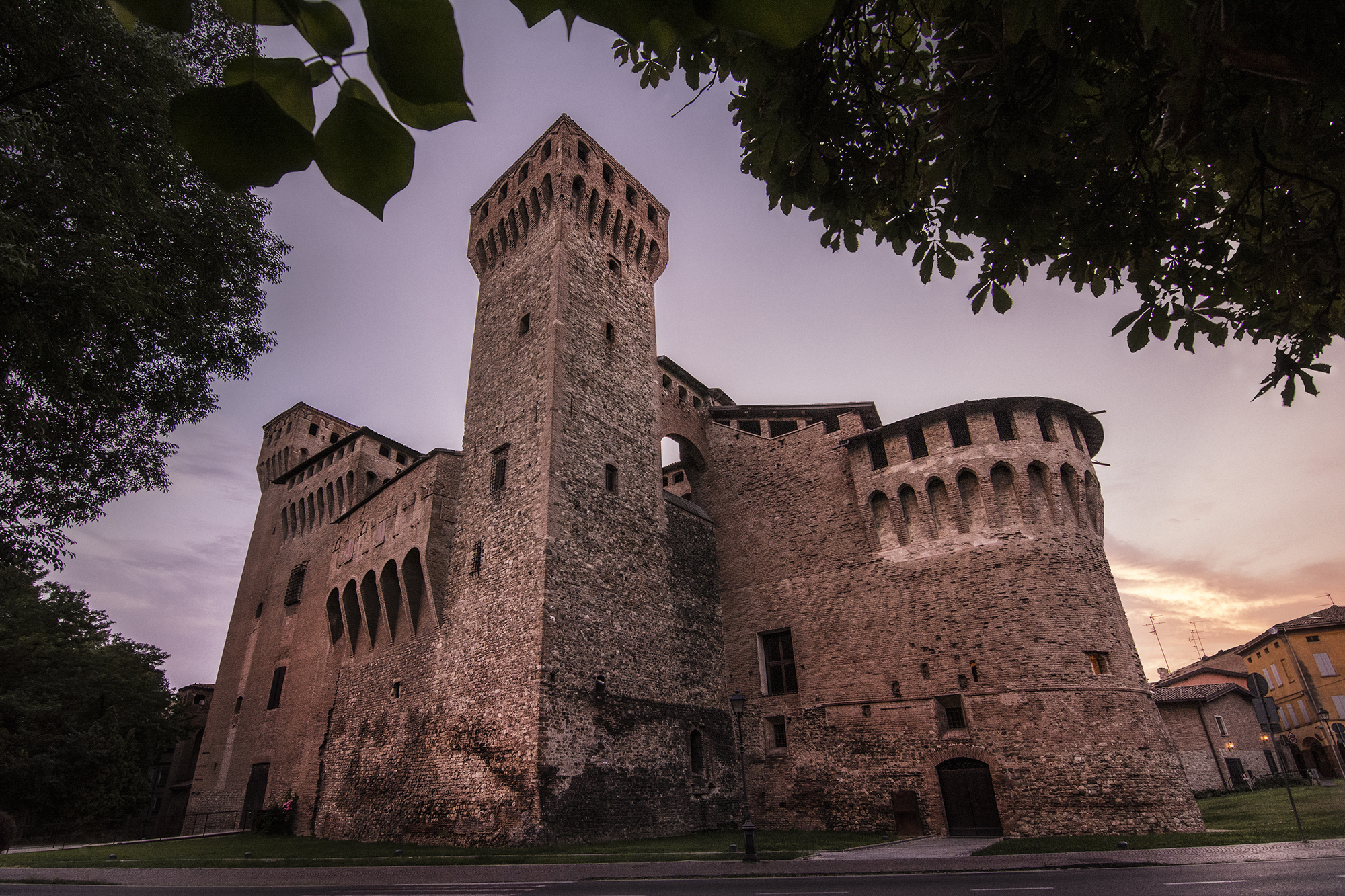
Vignola Fortress | Ph. Lara Zanarini
Nestled amidst the rolling hills of Sassuolo, a stone’s throw from the three castles of Modena, the “divine” thermal waters of Terme della Salvarola await you, while from the Vignola Fortress you can easily reach Terme Felsinee.
Author
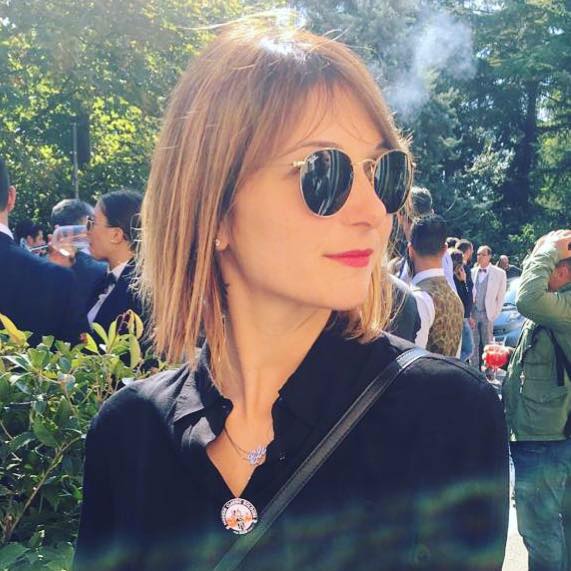
Elisa Mazzini
Social Media Manager for @inEmiliaRomagna and full-time mom.
You may also like
Castles and Thermal Spas in Romagna
by Elisa Mazzini /// December 18, 2024
Castles and Thermal Spas near Bologna
by Elisa Mazzini /// October 12, 2020
Historical Spas in Emilia-Romagna
by Elisa Mazzini /// February 17, 2020

Interested in our newsletter?
Every first of the month, an email (in Italian) with selected contents and upcoming events.
Parks and thermal spas: a weekend of wellbeing
by Celestina Paglia /// September 21, 2020
